Monday, September 30. 2013
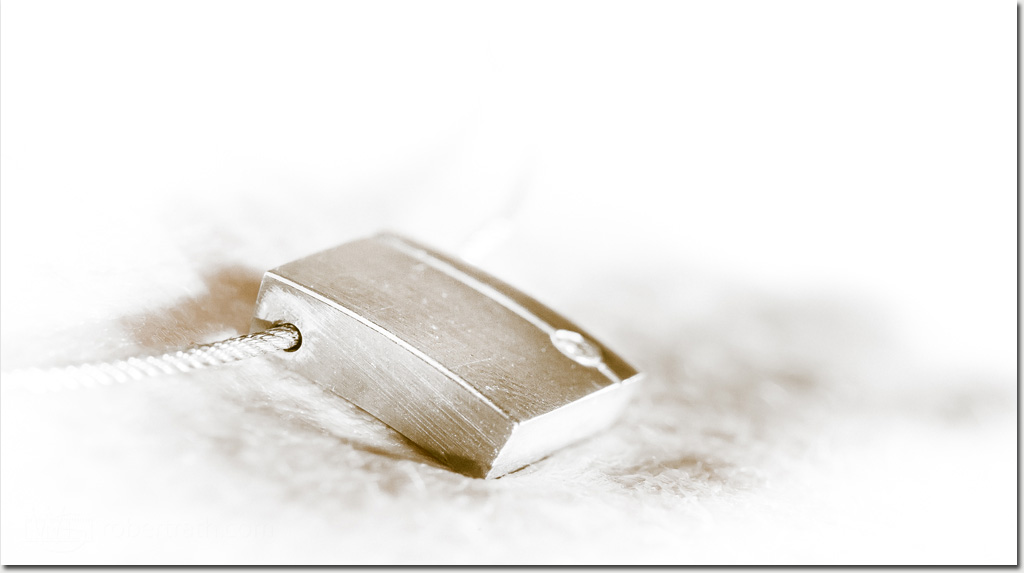
Gently pressing down on delicate skin this gift seemed far weightier that I would have imagined.
Metal and stone, made with artistry, given with love and worn with pride. I would have thought it would lay there on an unblemished surface. Instead I see the burden.
Photo: Robert Rath, ‘Day 639, The Gift', 1/200s f/11 ISO100 100mm 2x Off Camera Strobes
Sunday, September 29. 2013
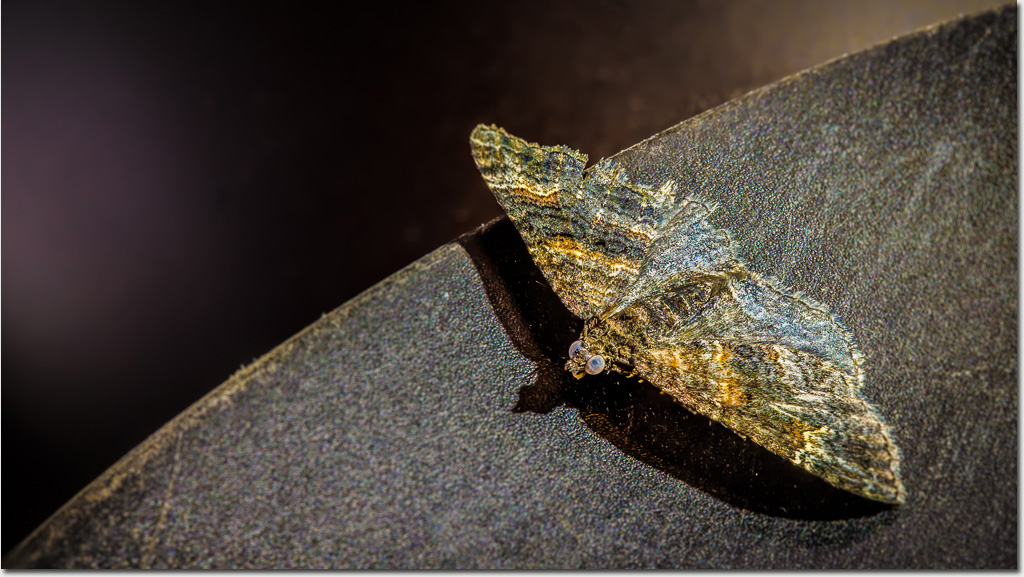
It came in from the cold, circled a few times and then the moth landed on a soup ladle. Fortunately I noticed before he became part of the evening meal.
I normally escort uninvited guests from the house but this guy got to have his photo taken first before being sent back out into the cold again.
Photo: Robert Rath, ‘Day 638, The Moth Has landed' 0.5s f/14 ISO100 100mm
Saturday, September 28. 2013
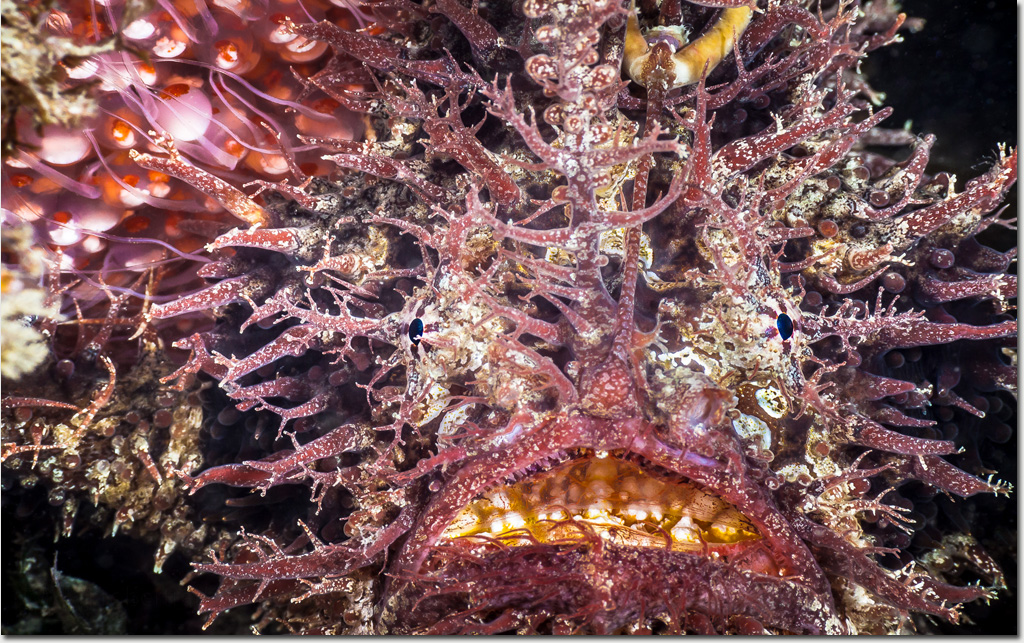
How can something be so beautiful and so ugly at the same time?
Easy if you are broody Tasseled Anglerfish (Rhycherus filamentosus) and she (or is that he?) is being very motherly about that brood of babies being guarded.
Many northern hemisphere anglerfish could not care less about their eggs letting them float away in the ocean currents enshrouded in a gelatinous raft. For this reason their habitat and distribution cover vast areas.
Our Tasseled Anglerfish on the other hand guards its young until they hatch when they will simply sink to the bottom (according to Rudi Kuter) and make their home in the nooks and crevices of the local habitat. For this reason the Tasseled Anglerfish is unique to the Southern Australian coastline.
Photo: Robert Rath, ‘Day 637, Motherly Love' 1/160s f/16 ISO640 100mm
Friday, September 27. 2013
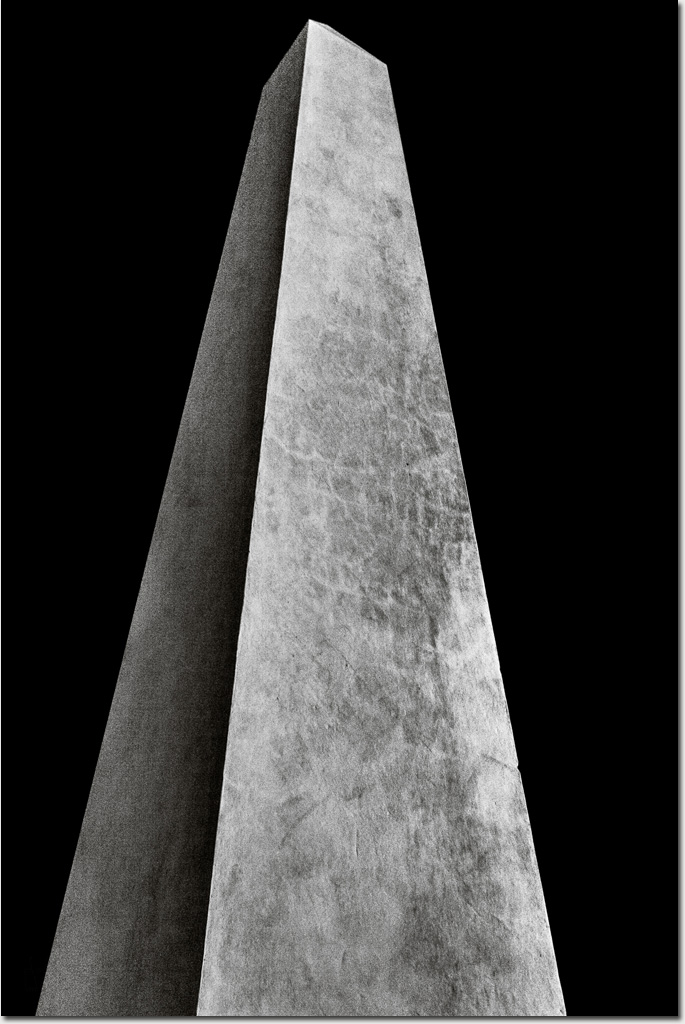
'Obelisk' A tall, four-sided, narrow tapering monument with a pyramid-like top.
This monument stands in memory of Norwood Primary School graduates who died in the first world war. It was a powerful symbol even before I read its plaque.
Photo: Robert Rath, ‘Day 636, Obelisk' 1/10s f/5.6 ISO4000 40mm
Thursday, September 26. 2013

Snakeskin or crocodileskin or starfishskin?
It might look similar but that is where the similarity ends. The 'last' of a starfish is made of this amazing substance which can change from being as hard as bone to as subtle as leather.
This starfish is a biscuit star, so named as their arms are so squat and close to the body you'd think it was all one structure.
Notice the strange plate with the little striations? Its the only plate like it on the the entire body of the starfish and it is the other of only two openings, the other being its mouth. This 'grate' allow the starfish to pass water and extract oxygen it without it it would drown.
Photo: Robert Rath, ‘Day 635, Starfishskin' 1/160s f/10 ISO320 100mm
Tuesday, September 24. 2013
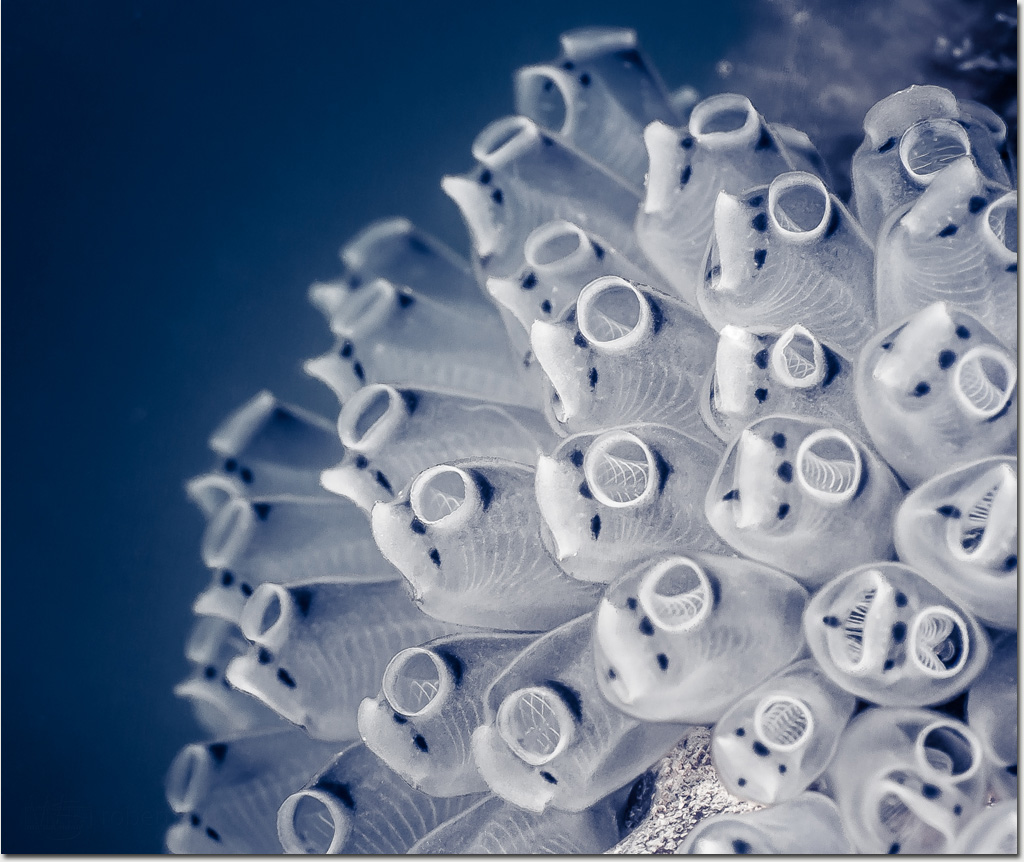
Whenever I see these on jetty pylons or on reef I think of flowers and bluebells.
In reality these little critters are ascidians or seasquirts and anything but bluebells. These are Blue Throat Ascidians ( Clavelina australis) and live in compound clusters. Most interesting is they are chordates, the same phylum as us! Even though they don't really have a backbone and ribs, though it looks like it through their transparent bodies, they do have a long nerve running the length of their body in the same way our spinal column does.
This image was captured at Rapid Bay, South Australia, where they were attached to a metal stake driven into the sea floor.
Photo: Robert Rath, ‘Day 634, Blue Throat Ascidians' 1/160s f/10 ISO320 100mm
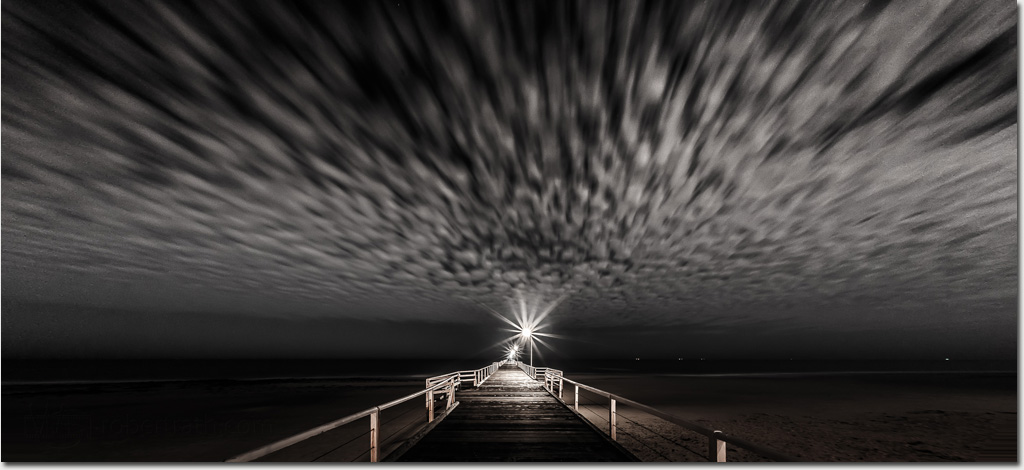
I have never really thought about how the direction of long exposure cloud streaking can relate so strongly to the subject.
It's not quite there in this image where I would have liked the movement to be perfectly aligned with the jetty itself. It is close though and perhaps now that I am aware of it I will pay more attention to it's role in future long time exposure images.
Photo: Robert Rath, ‘Day 633, Jetty Perspective' 30s f/14 ISO640 15mm
Monday, September 23. 2013
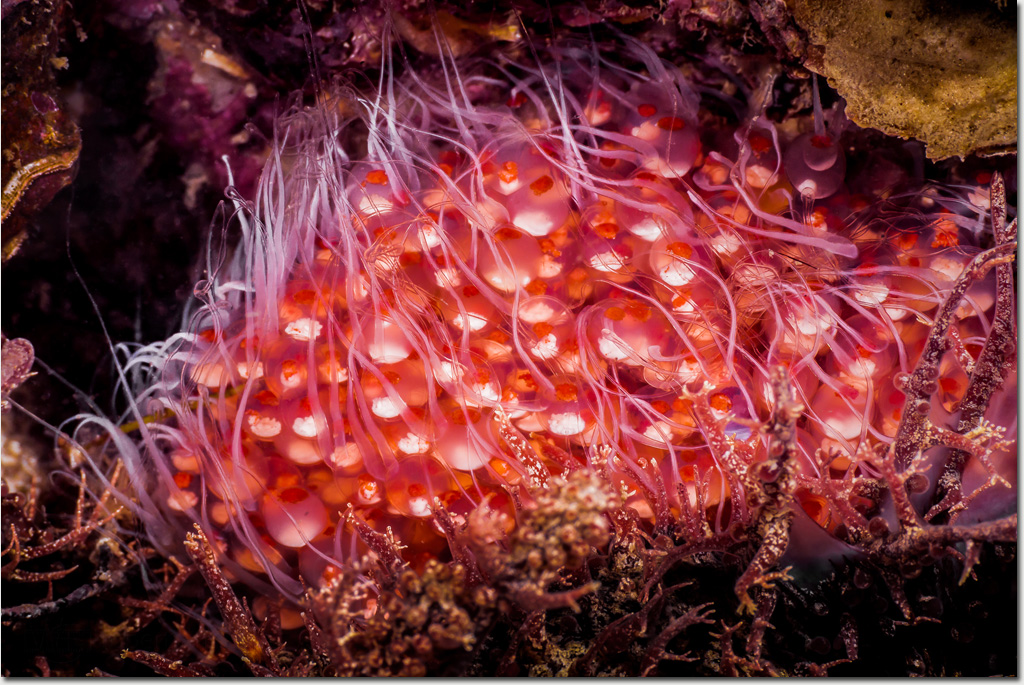
On my last dive at Rapid Bay a few days ago I discovered a brooding Tasseled Anglerfish ( Rhycherus filamentosus) with a clutch of eggs.
Now a few days later I decided to see how they were going. I am not sure I can make out much of a difference just yet so perhaps I will space out the visits a little more from next time.
The Tasseled Anglerfish is very protective of its eggs and guards them well. In this image they have not been abandoned, you can just see the parent's dorsal fin running along the bottom edge of the frame.
Photo: Robert Rath, ‘Day 632, Frogfish Caviar' 1/160s f/16 ISO640 100mm
Sunday, September 22. 2013
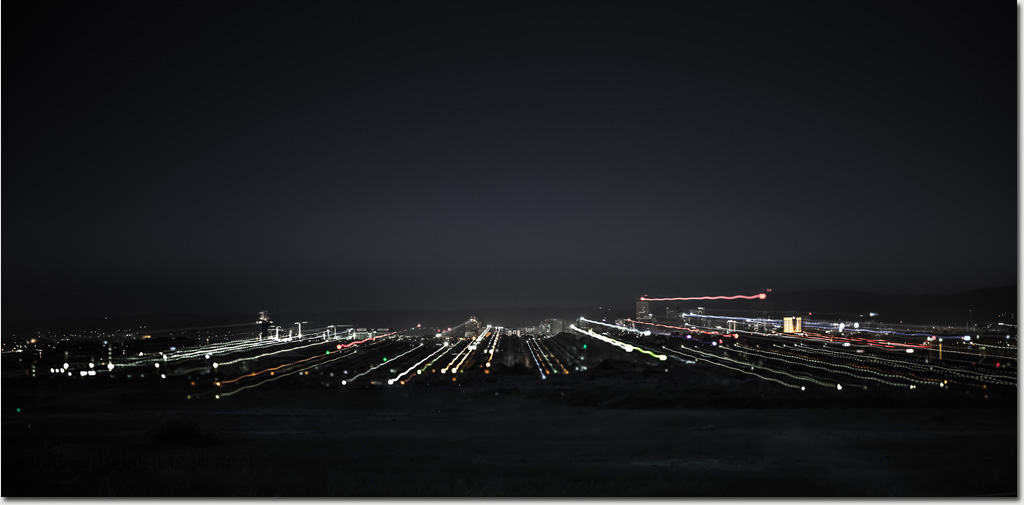
It's like a scene from some futuristic laser skirmish with the Adelaide CBD under siege!
But under siege from what? It's zoomed in evil twin of course! The real story is that this is nothing more sinister than a quick twist of the zoom during a the image exposure.
.
Photo: Robert Rath, ‘Day 631, Adelaide Under Siege' 4s f/5.0 ISO640 100mm
Friday, September 20. 2013

Of all our amazing local critters, this Tasselled Anglerfish, Rhycherus filamentosus, at Rapid Bay would be one of the most difficult to spot.
Plenty of patience (which means plenty of air) is part of finding these in the algae and sponges. The other part is a willingness to see past the obvious. The technique I have found most useful is to look around for a likely habitat and then carefully work my way over every bit of rock, weed, sponge and algae and at each interesting feature try and imagine I am looking at an anglerfish. It's a little bit like staring at the patterns in the clouds trying to find an elephant or a giraffe. With a little patience and of course with a little luck, one might just magically appear before your eyes.
Tasselled Anglerfish are not great swimmers and prefer to sit lying in ambush for a test morsel to swim past. The yellow worm crawling amongst the tassels is the angler's lure. When it attracts a passing fish to investigate just a little too closely that partially open moth snaps up dinner in the blink of an eye.
Photo: Robert Rath, ‘Day 630, Tasselled Anglerfish' 1/160s f/10 ISO320 100mm
Thursday, September 19. 2013

Perhaps bokeh is a little overdone in abstract photography but for some reason I am always drawn to it in other people's images.
Bokeh is the shape and quality of they way a captured image blurs when a lens moves away from focus. The characteristics of what makes bokeh pleasant or ugly are driven by the makeup of the lens, the shape of the aperture and the composition of the image. As far as I know we never perceive bokeh with our own eyes. Perhaps it is there in our vision but our brains have become so programmed at removing it that it is all but impossible to see.
What ever kind of bokeh a lens creates what fascinates me is the magic of rendering the invisible into the perceivable. After that the shape, the quality and the composition can make bokeh simply beautiful.
Photo: Robert Rath, ‘Day 629, Simply Beautiful Bokeh' 4s f/8.0 ISO640 200mm
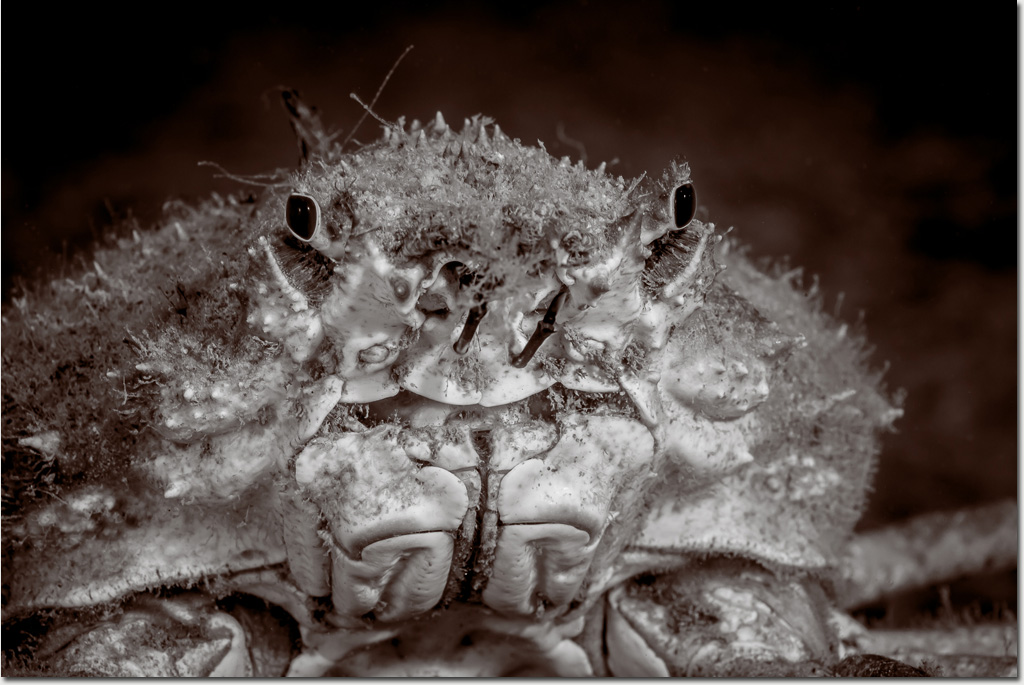
This was one big mean spider crab with attitude!
At about 60cm across this guy put himself right in the middle of my return path to the exit . I went forward, he bared his mandibles at me. I went left, he went left. I went right, he went right. I went back, he chased. I went up, ha ha, spider crabs can't swim!
Photo: Robert Rath, ‘Day 628, Who You Staring At?' 1/160s f/10 ISO320 100mm
Wednesday, September 18. 2013
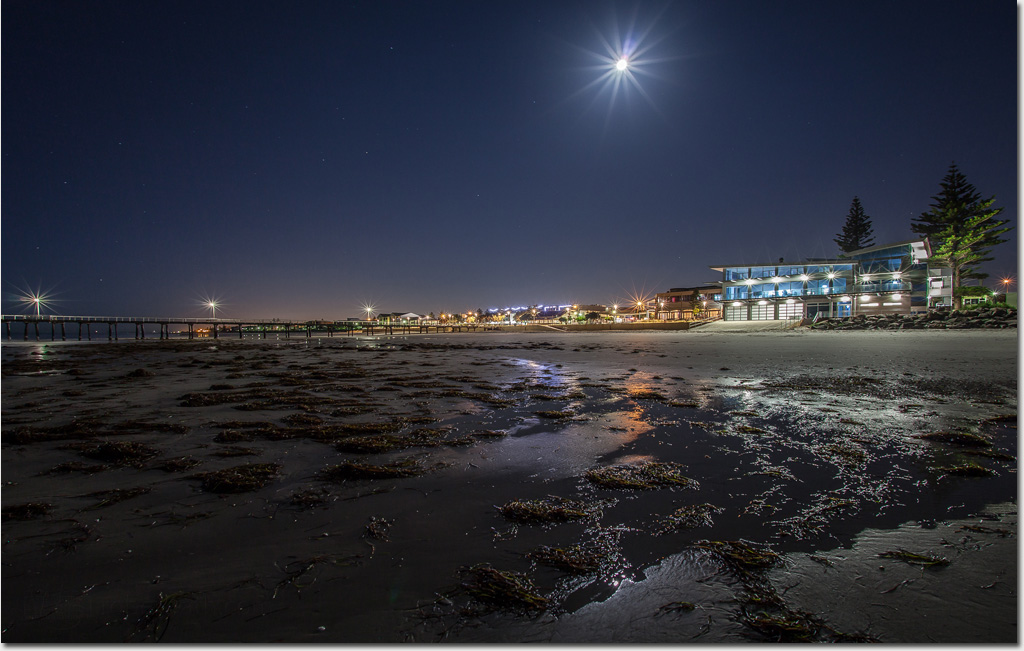
What better place to capture the new Henley Beach Surf Lifesaving Club than from the surf?
Well it would be if the tide was not all the way out!! A wonderful combination of a still evening, a very low tide and and a huge bright moon. Night time beach photography does not get much better than this!
Photo: Robert Rath, ‘Day 627, The New Henley Surf Club' 30s f/7.1 ISO100 15mm
Tuesday, September 17. 2013
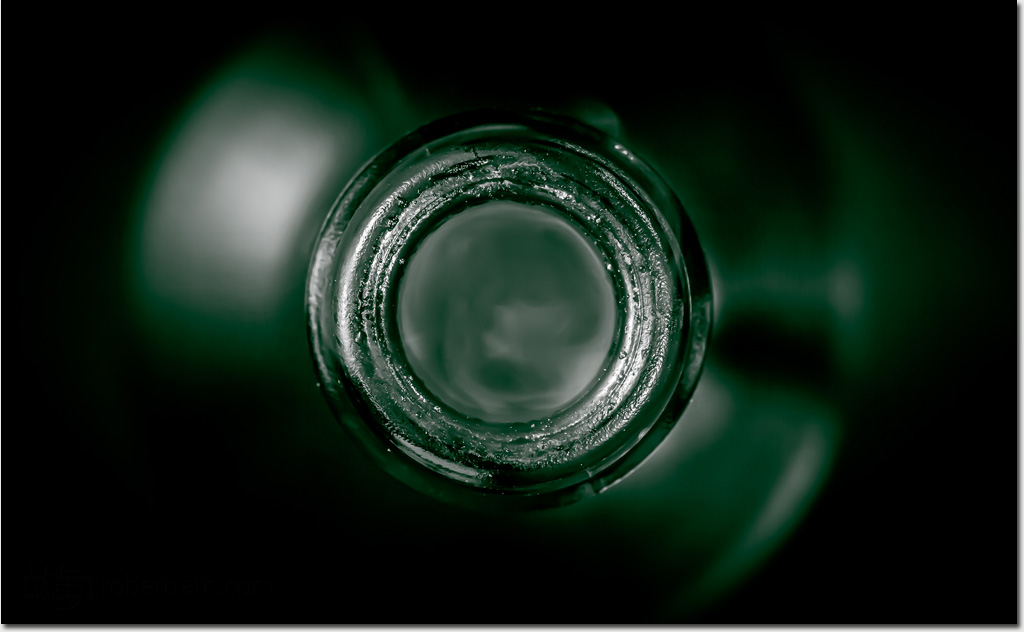
There are two things I really like about opening a bottle of champagne, the pop and the vapor.
For one reason or another I have not been about to capture that initial release of vapor in the way I envision. Here is a view looking directly into the bottle just after that initial release with the neck still full of vapour. I wonder if there is a genie hiding in there!
Photo: Robert Rath, ‘Day 626, Looking For The Genie' 0.4s f/11 ISO320 100mm
Monday, September 16. 2013

This impressive mountain range is not all that it seems.
In truth it is just a small crystal of gypsum catching the afternoon sun on the kitchen window sill.
Aside from various glass household objects to craft the light the way I wanted no other tricks were involved. It's just a matter of perspective.
Photo: Robert Rath, ‘Day 625, Crystal Ridge' 1/100s f/22 ISO320 100mm
Sunday, September 15. 2013
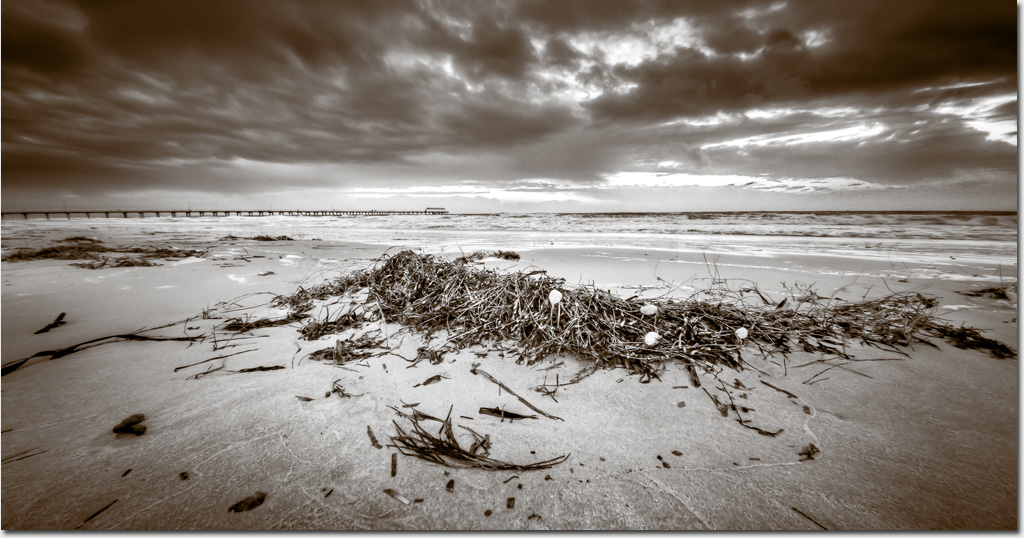
I have captured a few images like this one with seaweed washed up on the beach.
The challenge in an image like this is depth of field. It is not easy to have both that jetty shelter in focus as well as the bedraggled clump of tangled weed in the foreground.
Even though choosing the smallest aperture available on the lens will maximise depth of field, it will also make the image soft with diffraction.
The secret is in understanding something called the hyper-focal distance which is simply the distance at which everything from that distance to infinity will be in focus at a given aperture. There are plenty of tools for calculating the maximum aperture for a given distance but in practice I never use them. Almost always I use the depth of field preview (DOFP).
First begin at an ideal aperture like f/8.0. Using the camera's live preview at maximum magnification and with DOFP enabled, manually focus on the foreground and then move the panning cursor to a point on the background and assess how much the background is out of focus. Repeat this in the opposite direction, ie focus on the background and assess the foreground. If neither is good enough then stop down, ie to f/11 and repeat. Continue this process until you eventually get to a point where you are happy with focus in both the foreground and the background and then set the actual manual focus mid way.
All of this all assumes you have the time to manually setup the camera which fortunately is usually the case for landscapes.
Photo: Robert Rath, ‘Day 624, Bedraggled' 1/6s f/18 ISO640 15mm
Saturday, September 14. 2013
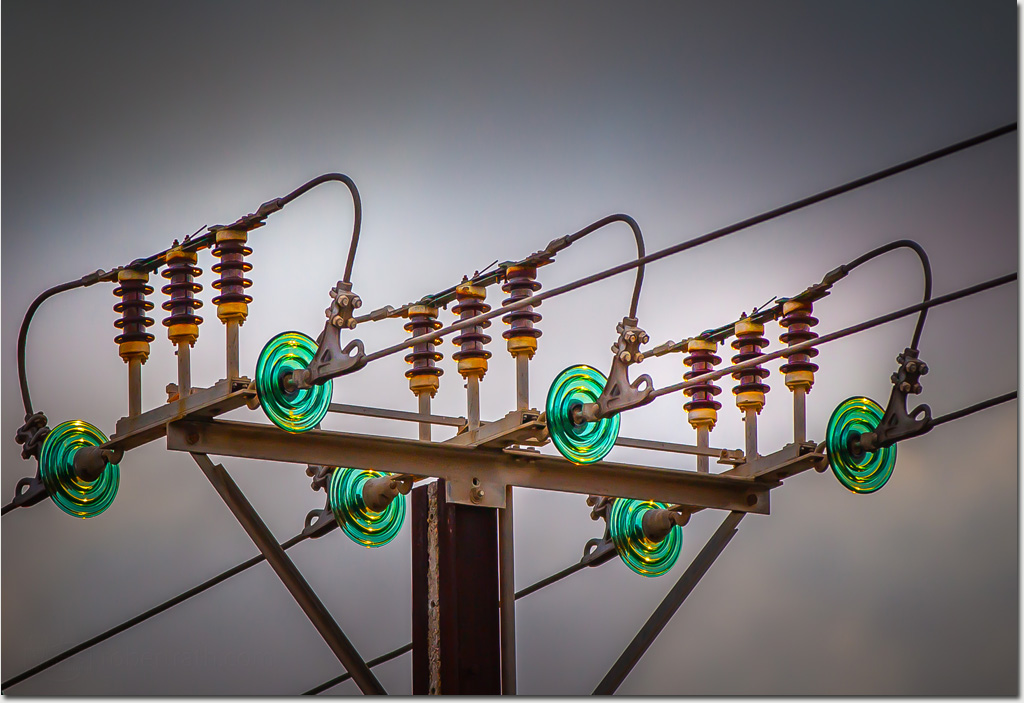
Yes it really is just the overhead power-lines across from our place. However ...
It was the very last golden light from the setting sun which sneaked through a rent in the grey sky. Just for a the briefest of moments the light it produced was surreal and brought this ordinarily dull and grey power-line to life.
Photo: Robert Rath, ‘Day 623, 11000 Volts' 1/400s f/2.8 ISO160 200mm
Friday, September 13. 2013
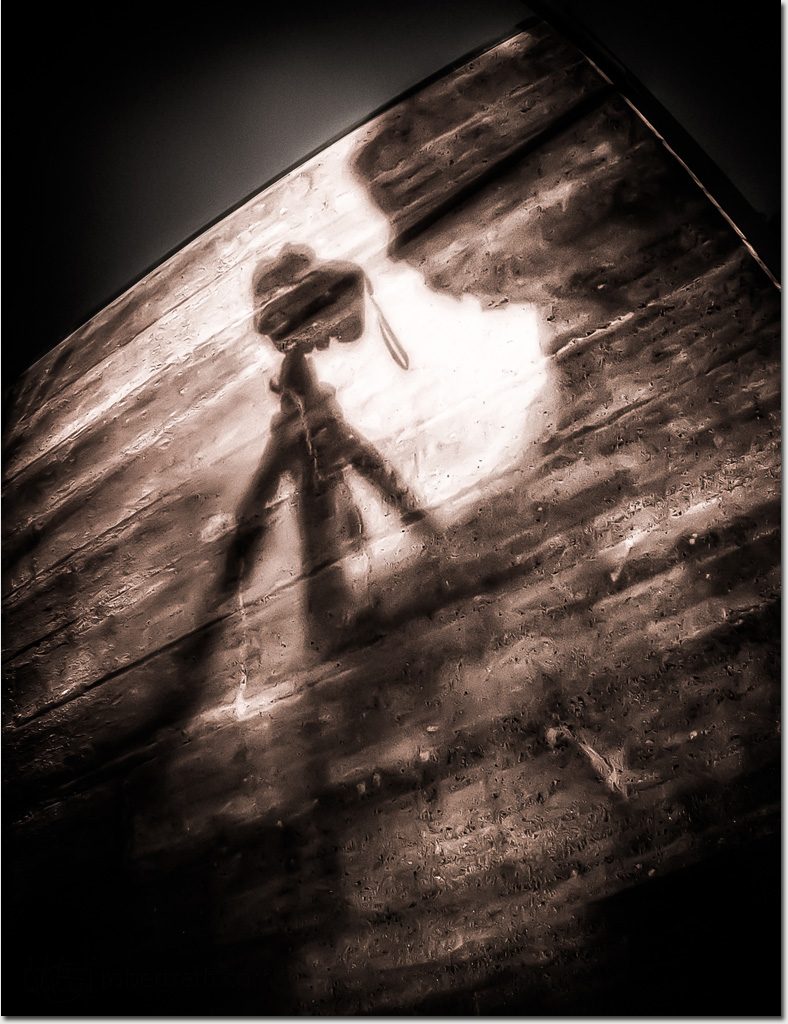
As I stood in the darkness peering through the viewfinder of my camera I could not help feel as if I was being watched.
I raised my head and looked around, ... nothing. Then I thought to look up and towering over me I saw the watcher.
Photo: Robert Rath, ‘Day 622, The Watcher' 3.2 f/14 ISO1000 15mm
Thursday, September 12. 2013
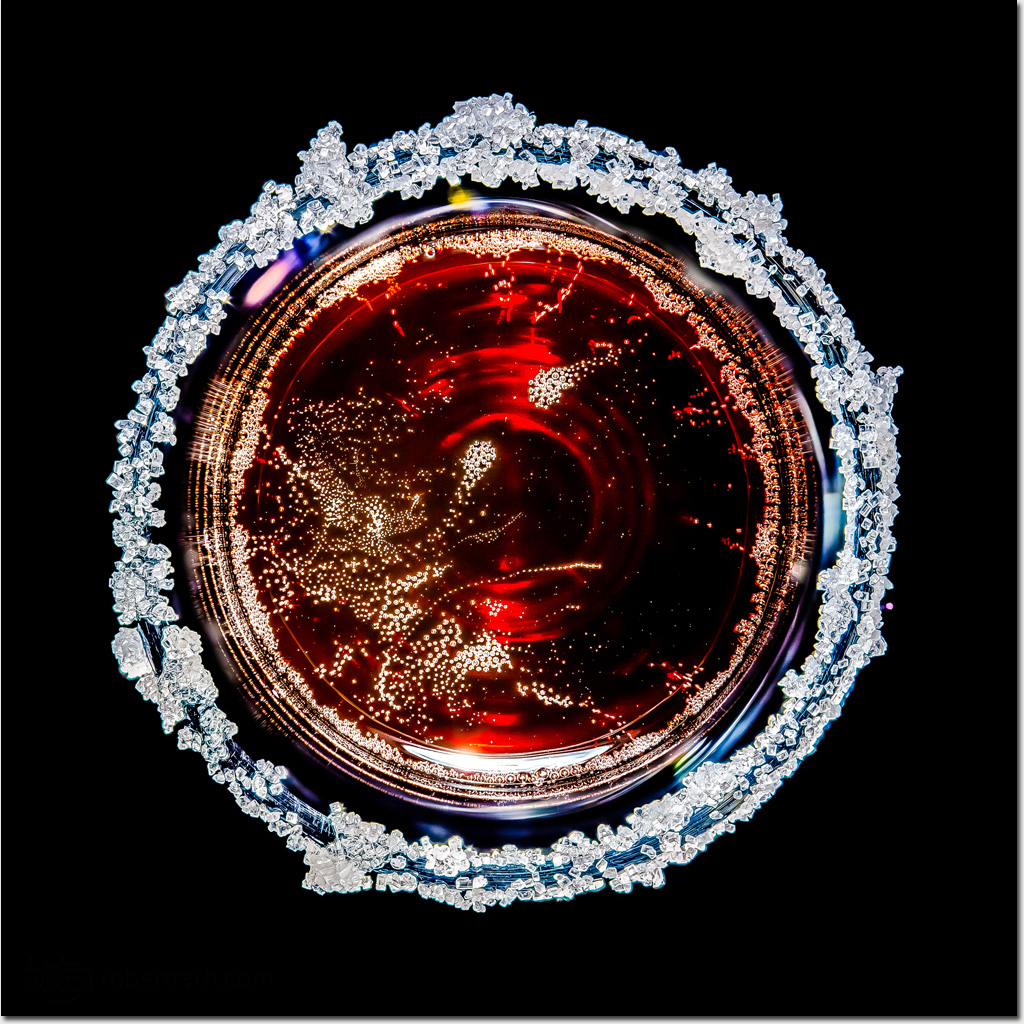
A diamond encrusted crater rim encircles a crimson volcanic lake bubbling with ancient gases.
It could easily have been a seen from another world. Instead it was just a unique view of the dining room table and glass of sparking shiraz not long for this world.
Photo: Robert Rath, ‘Day 621, Another World' 1/25s f/16 ISO800 100mm
Wednesday, September 11. 2013
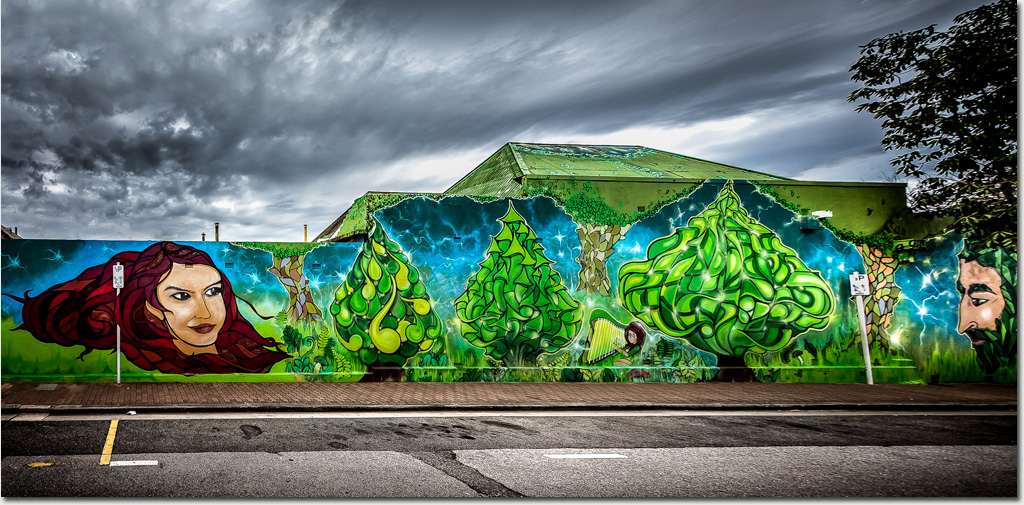
Another chance find. George Court, just off Sturt street in the Adelaide CBD.
I initially tried a stitched panorama for this image but due to the acute angles and tight space I could not get the paving the match up. My solution in the end was to take a single image from one long diagonal and correct the perspective in post.
Photo: Robert Rath, ‘Day 620, George Court Fantasy' 1/60s f/14 ISO100 17mm
Tuesday, September 10. 2013
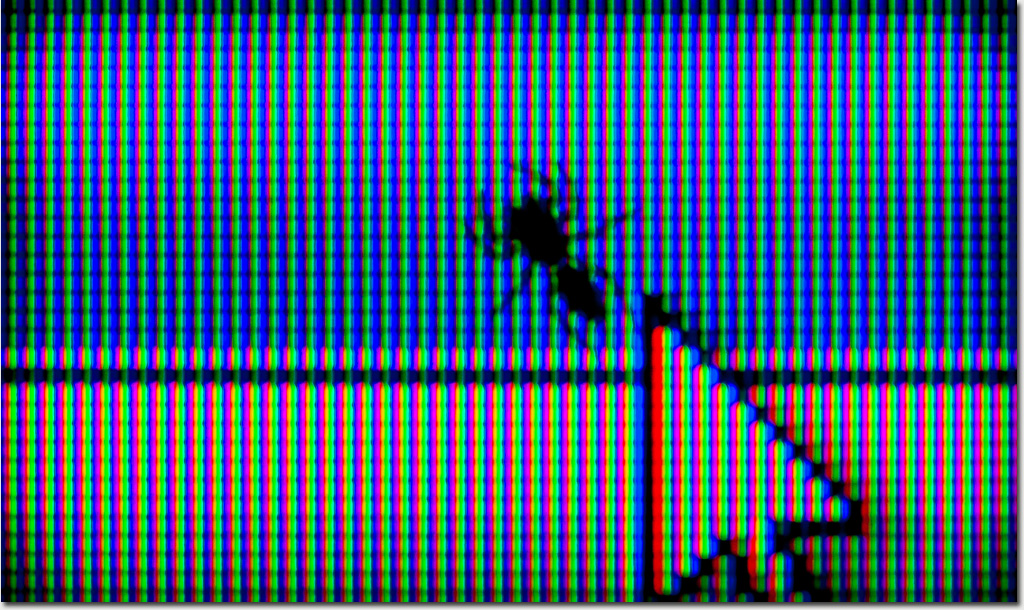
I looked up and noticed a spider on my screen. It was so small at first I thought it was a clump of pixels.
As I normally do I grabbed a shot glass and business card (my standard spider catching kit) and placed it over the spider on the screen. Then I watched in disbelief as it crawled under my cursor and off to another part of the screen.
It was trapped between the back-light and the panel. I watched for a while as it wondered about under my text, under my images and under my cursor. It did not seem to care what was being displayed.
So for now I have a spider who appears and disappears from time time time on my screen. It's trapped inside and there is nothing I can do.
Photo: Robert Rath, ‘Day 619, Trapped' 1/6s f/5.6 ISO400 400mm
Monday, September 9. 2013

Perhaps the most famous of all fractals is the Mandelbrot.
Fractals have the curious aspect of becoming more and more complex the closer you inspect them, infinitely so. Back out however and look at them from a distance and all that complex random detail becomes ordered and seemingly simple.
From far away I am intrigued by those deep black holes where no detail exists, nothing at all. I wonder what's at the bottom of that fractal abyss.
Photo: Robert Rath, ‘Day 618, Fractal Abyss' 25s f/16 ISO320 100mm
Sunday, September 8. 2013
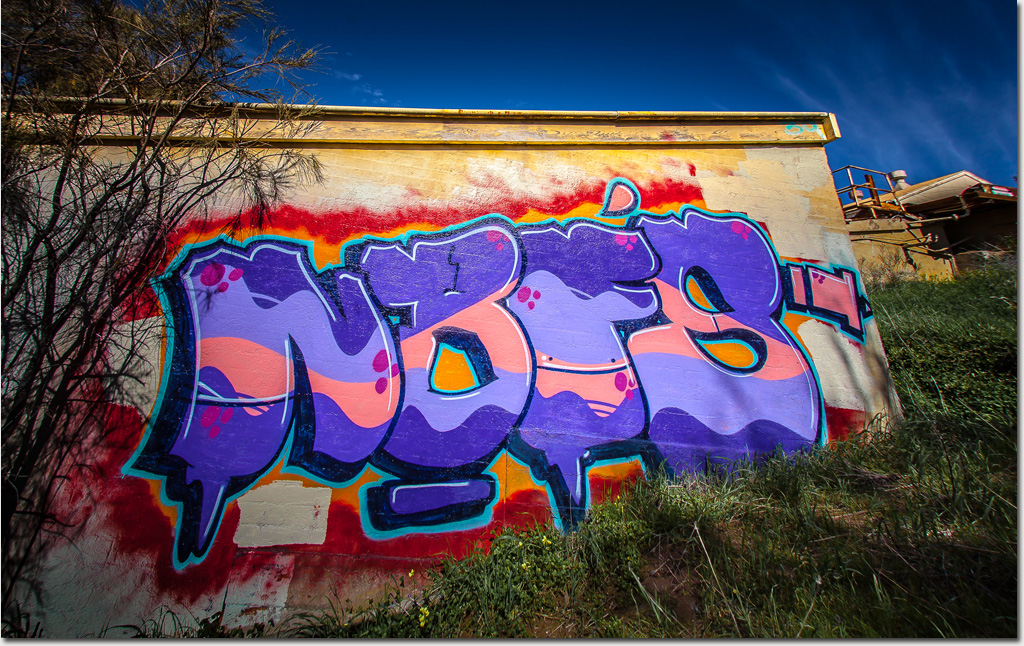
I am not actually sure if these are the initials NBFS.
Something tells me it is not as simple as that . First there is the dash under what looks like a 'B' but then it might not be a 'B' at all. Then there's that apostrophe between the 'F' and the 'S'. These two at least I am sure about.
So perhaps it is a tag of ownership, NBF's or perhaps I am reading way too much into some big splotches of colour on an abandoned gypsum loading facility.
What ever it means, it's colourful and I liked it.
Photo: Robert Rath, ‘Day 617, NBFS' 1/160s f/8.0 ISO100 15mm
Saturday, September 7. 2013
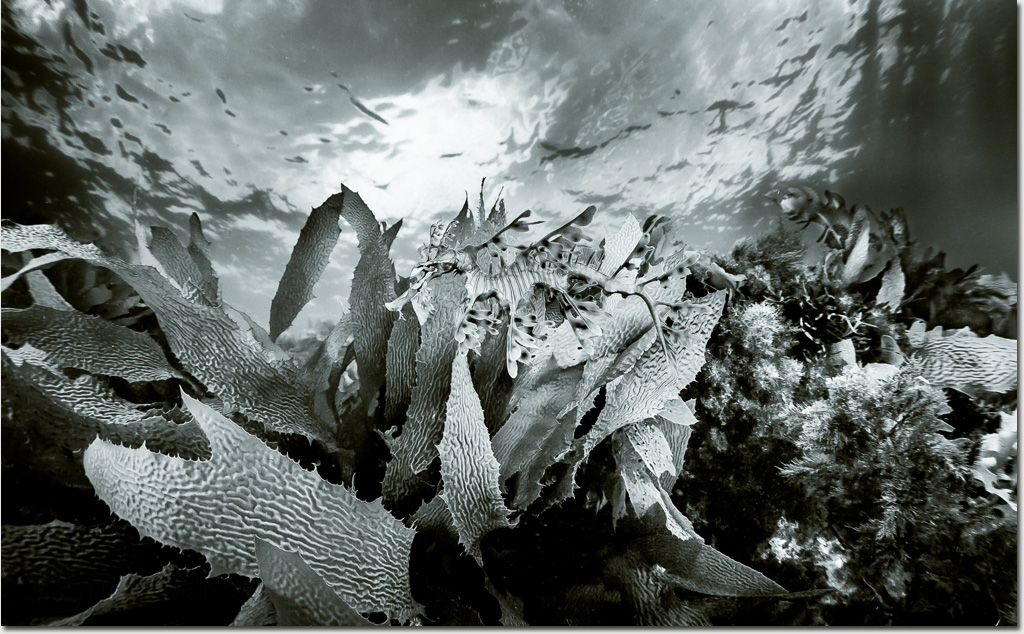
Searching for a Leafy Seadragon is like a game of hide and seek.
More often than not the dragon will have been in plain sight all the time, just visually blended into its environment. Rather that covering lots ground in the 'seeking', instead just move a few metres and then just wait and watch for a minute or two. If nothing interesting appears then move on a few metres and wait and watch again.
Patience and a willingness to allow the dragon to just appear is the best strategy in this game of hide and seek.
Photo: Robert Rath, ‘Day 616, Hide And Seek' 1/160s f/8.0 ISO100 15mm
Friday, September 6. 2013
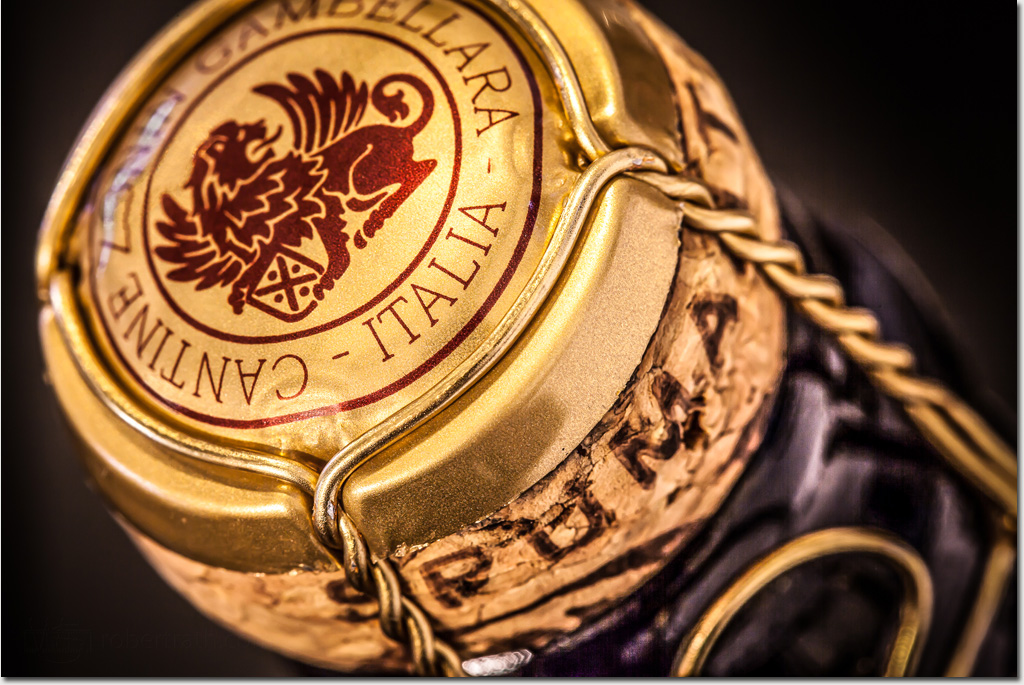
Something a little lighter and perhaps a little fizzy.
I am still trying to capture a cork popping from the bottle. I didn't get it this time round. Oh well another bottle, another time then.
Photo: Robert Rath, ‘Day 615, Italia' 2s f/11 ISO100 100mm
Thursday, September 5. 2013
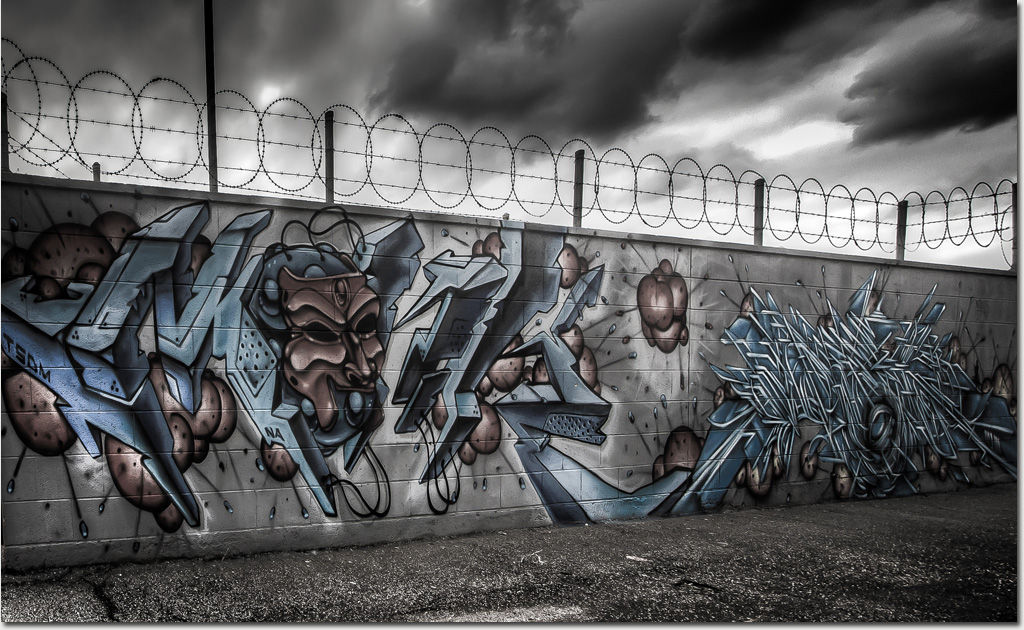
"Good morning, the worm, your honour. The crown will plainly show the prisoner who now stands before you, was caught red-handed showing feelings. Showing feelings of an almost human nature. This will not do!!"
The album 'The Wall' by Pink Floyd was an import musical watershed to me in my as a teenage years. Pink Floyd's lyrics were the first I had experienced which went beyond the simple and typical ideas of love and romance and acknowledged a deeper and often more uncomfortable aspect of human emotions.
Although not as high as the wall I had once imagined, the razor and barbed wire of this adorned wall in Bowden Adelaide send a similar message.
Photo: Robert Rath, ‘Day 614, The Wall' 1/400s f/8.0 ISO320 17mm
Wednesday, September 4. 2013
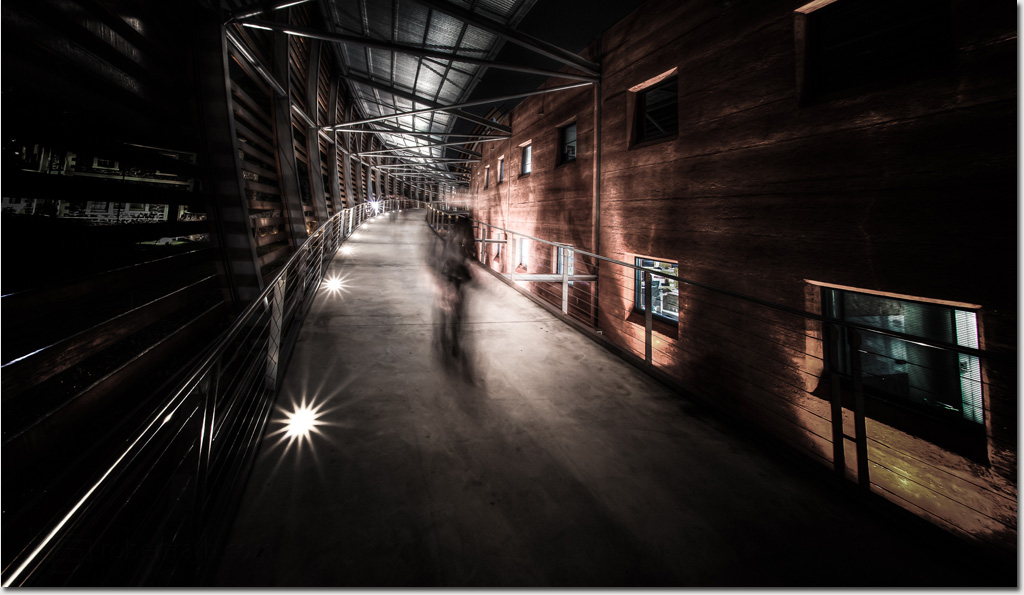
This departure is innocent enough with one person leaving the building in the foreground and and a group following behind.
The ghostly nature of this image however carried a different feeling as I imagined the subject leaving via the front and the back at the same time.
Photo: Robert Rath, ‘Day 613, Departure' 5s f/14 ISO1000 15mm
Tuesday, September 3. 2013
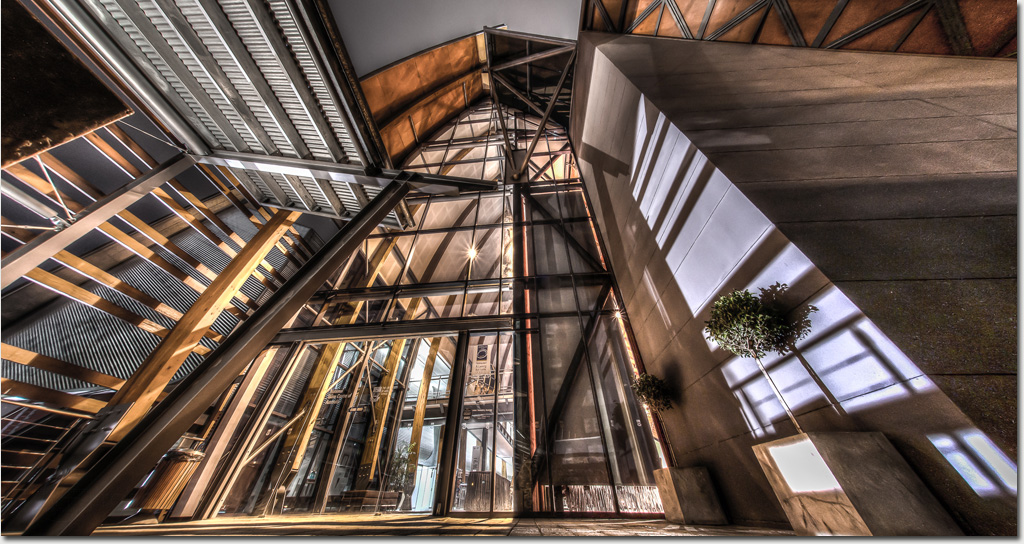
The University of Adelaide's 'National Wine Center' is one of Adelaide's most interesting modern architectural spaces that is open to the public.
I'm sure it does our wine industry justice but what I really like able the place are the angles!
Photo: Robert Rath, ‘Day 612, Another Angle on the National Wine Center' 10s f/14 ISO1000 15mm
Monday, September 2. 2013
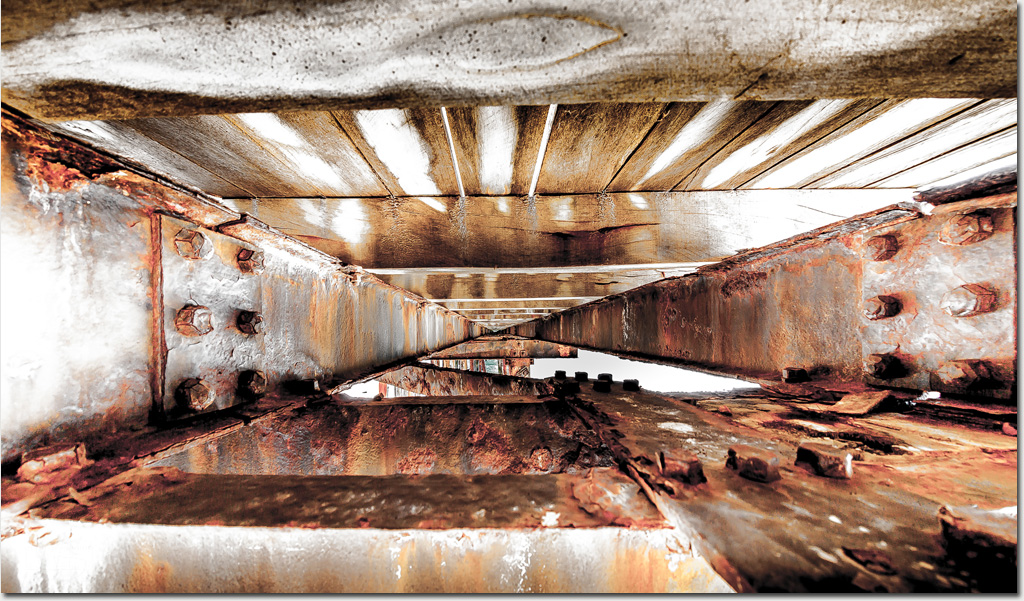
This old structure is not long for this world as it slowly rusts away.
The old Rapid Bay Jetty is mostly a structure of steel having once been protected from corrosion through electrification and galvanic protection. The day the power got turn off it was like turning off it's life support.
Photo: Robert Rath, ‘Day 611, Under The Boardwalk' 1/13s f/7.1 ISO100 15mm
Sunday, September 1. 2013
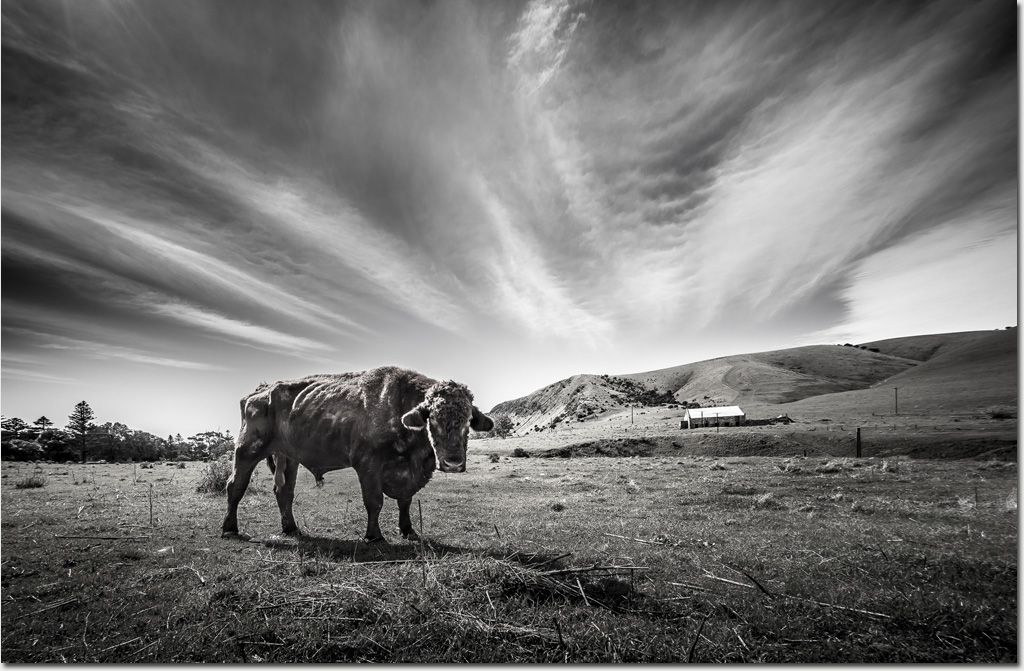
As I drove past this big old bull he was resting alone in a field. I immediately pulled over for the photo opportunity.
Now here is the dilemma I faced. I was only armed with a wide angle lens which meant getting close, really close. I was not sure how safe that was going to be but I climbed the fence anyway and cautiously made my approach. He seemed like a big old softy with that shaggy face and big brown eyes. As I approached I started taking photos and chatting so that he became used to the sounds I was making.
In the end this is as close as I got (about 4m) before he tossed his head and meandered off in the opposite direction. Perhaps I was lucky considering he was as tall as me an at least 20 times heavier and could have done a lot of damage if he chose. Still I wish I'd had gotten just that little bit closer.
Photo: Robert Rath, ‘Day 610, All Bull' 1/250s f/10 ISO100 15mm
|